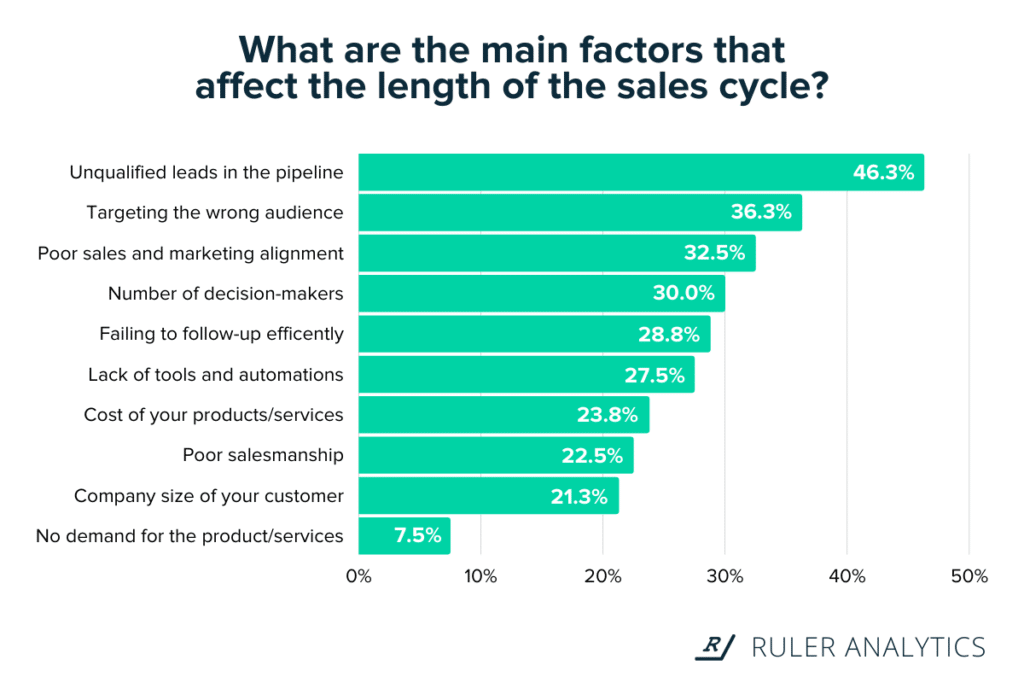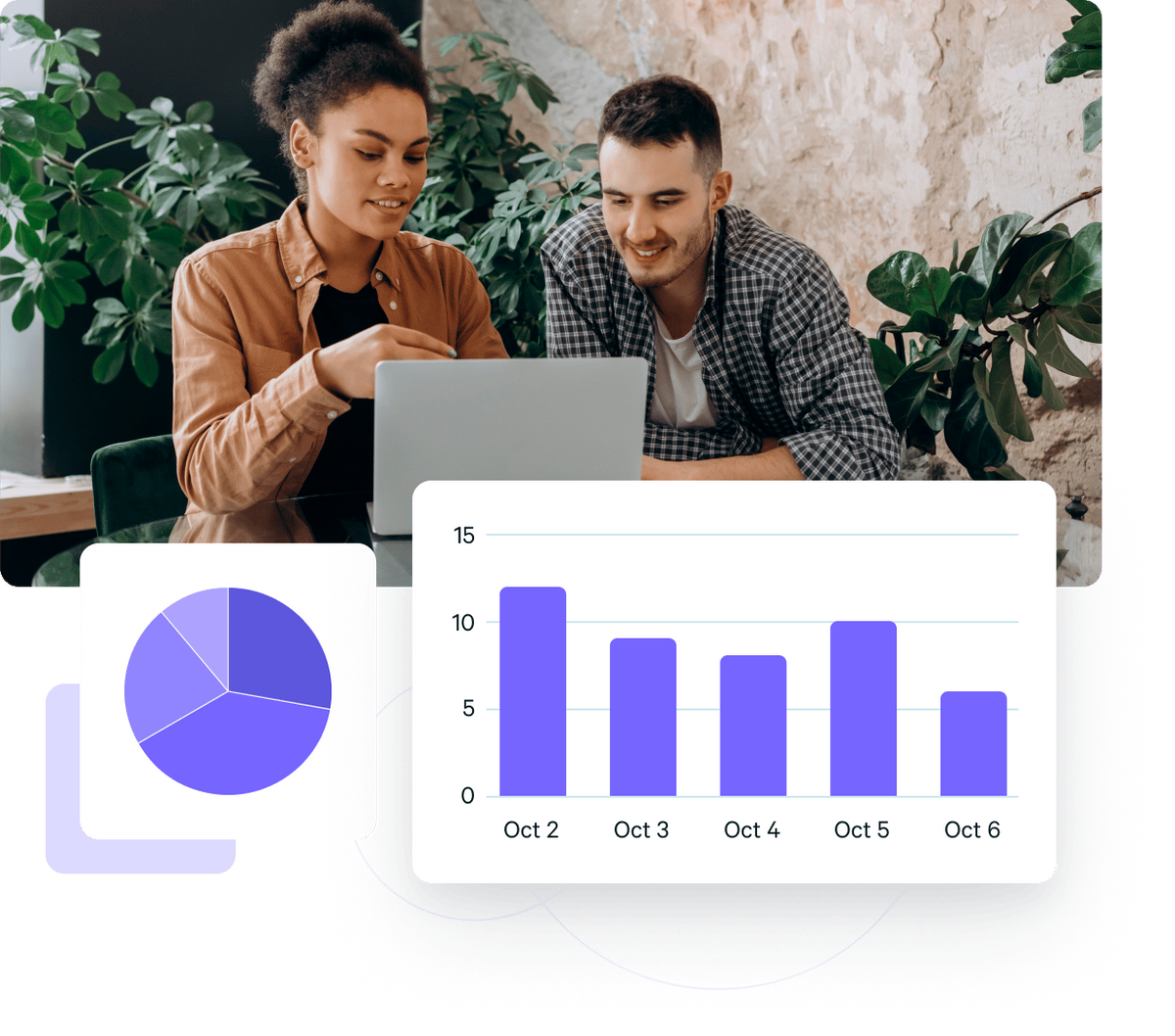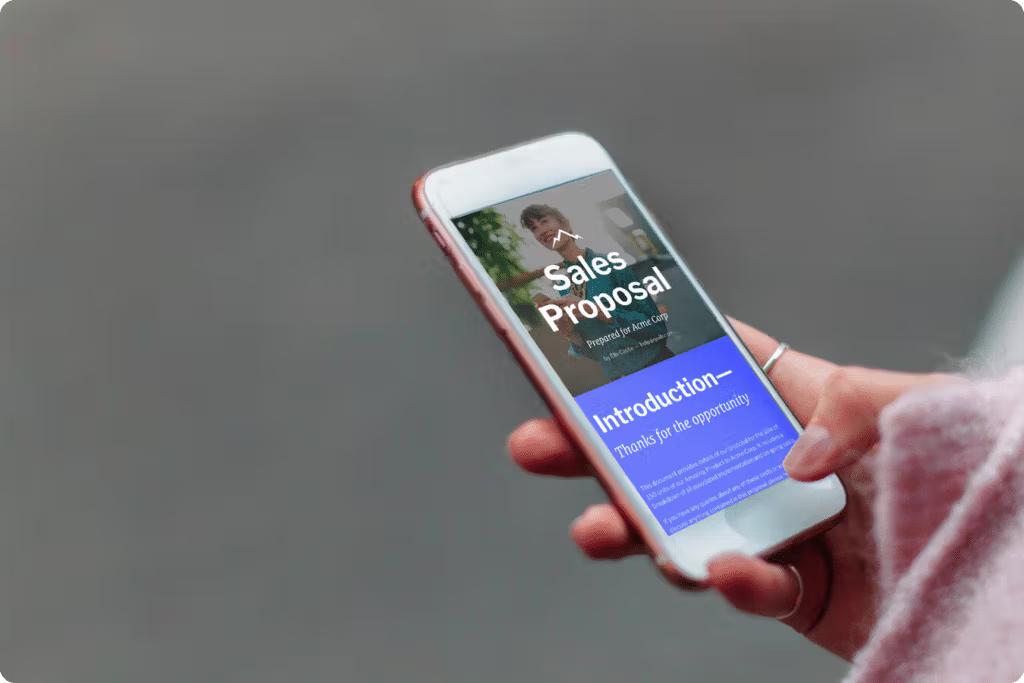Some deals move slower than a snail on a Sunday stroll (yawn!). In this blog, we dive into six B2B strategies that are proven to reduce sales cycles, while improving team productivity and efficiency.
With every extra hour, day, or week spent on lengthy sales cycles, you’re losing precious time that can be better spent on building your business. “Time is money” is a cliche that's been trotted out so often over the years - all it gets these days is a roll of the eyes (or a shiver down the spine). But that doesn’t make it any less true. Especially when it comes to business, and even more especially when it's applied to the B2B sales cycle.
Luckily there are several proven strategies that can help businesses streamline their processes and optimize every step of their sales cycle, for a faster, more satisfying, and more efficient buying process for everyone involved.
Before diving into our guide to the six best strategies, a quick caveat: one-size-fits-all doesn’t work for sales any more than it does for Levi’s. Your specific industry, your target audience, and your USPs will all play a part in determining the most effective for your particular business. So assess them all through that lens before you decide on the changes that will have the most impact on you and your business. Without further ado…
1. Talk about pricing early
Unqualified leads are the single biggest factor in elongating your sales cycle. One of the smartest strategies to shorten the sales cycle in B2B is to be transparent about pricing early in the sales conversation. Get that elephant in the room out there, front and center.

By addressing the financial aspects upfront, you can quickly determine if your prospect has the budget and is a good fit for your product or service. This way, you’ll save time and resources while focusing on the most qualified leads. Don’t be afraid to qualify ‘out’ as diligently as you qualify ‘in.’ A sales pipeline choked with dud prospects is a false economy.
To make your pricing discussion more effective, break it down into digestible parts by using short paragraphs, bullet points, and tables, as necessary. Here are a few pointers on presenting your pricing information:
- Be clear and concise: Explain your pricing model in simple terms. Is it a fixed price, hourly rate, or subscription-based? Make sure your prospect understands the essence without getting overwhelmed by details.
- Showcase the value: Help your prospect see your offering's worth by highlighting the benefits and competitive advantages, as well as any cost savings they might achieve.
- Offer flexibility: If possible, provide multiple pricing options or tiers, allowing prospects to choose the one that best fits their budget and requirements.
Obviously, there are instances where your salespeople will want to build and reinforce the value first before you talk numbers. But in many cases, everyone’s time is best served by talking about price early on. That way, you can establish if it’s an objection to be handled, or something more critical.
2. Automation
Introducing automation into your sales process can be a game-changer.
Did you know a sales rep is 21x more likely to qualify a prospect if they respond to their initial request within five minutes? And while you can’t be perched by your computer morning, noon, and night, automation is the only real way to speed that process up.
Most initial emails contain broadly the same information, so they are ripe for automation.
Modern CRMs allow you to personalize your email responses too, so that you can get the best of both worlds.
With SDR’s spending nearly 21% of their time writing emails, these are far from marginal gains, they’re game-changers.
Once you have got to grips with the sales automation, you can look at streamlining other processes in your workflow, like updating deal information.
Qwilr takes it a step further with proposal automation, where templates and asset libraries allow you to create sales material with the click of a button from your CRM.
The proposal software helps with proposals, sales quotes, pitch decks - all the cumbersome content your reps hate compiling is ready to go within minutes of speaking with a potential buyer.
The more tasks you automate, the more time your sales team has to focus on higher-impact areas like relationship building, client research, and closing deals.
Here are some ways sales automation can save you time and resources:
- Lead Generation: Automatically find potential clients based on set criteria, keeping your sales pipeline filled with high-quality leads.
- Lead Scoring: Rate and prioritize leads based on their likelihood to convert, ensuring your sales team focuses on the most promising prospects. You can use lead distribution software to make this process easier.
- Task and Follow-up Reminders: No more missed calls or forgotten emails, let automation keep your team on track and on time with sales lead follow ups.
- Data Entry and CRM Updates: No one enjoys manual data entry, so let automation do the donkey work and free up time for other activities.
When it comes to shortening the sales cycle, working smarter – not harder – should be your mantra.
You can also check out our guide on the best sales automation tools.
3. High-converting sales proposals
The sooner your customers see the value in your product, the faster they are likely to sign on the dotted line. One key element of shortening the sales cycle is crafting high-converting sales proposals.
Personalization goes a long way in establishing credibility and trust, and with Qwilr you can show your prospect that you’ve done your homework, with content tailored to address their specific needs and pain points. No more information overload in your customer’s journey - sales reps can create highly personalized, branded content with our easy drag-and-drop editor. Everything your customer needs to understand your value quickly, drive decisions and sell internally on your behalf.
Remember, it's not about bombarding your customers with information; it's about presenting a coherent message that shows you understand their needs and that you have the ideal solution.
4. Drive decision-making with mutual action plans
With a well-crafted Mutual Action Plan (MAP), you can simplify your sales process, engage your clients, and tighten those partnerships - everything that helps to drive a shorter sales cycle.
The result? Less time juggling multiple decision-makers, sifting through piles of data, and waiting for that ever-elusive nod of approval from the powers that be.
So, what exactly is a MAP?
Why, I’m glad you asked….
Think of a MAP as a shared roadmap (pun intended) between you and the decision-makers.
It outlines the key goals, milestones, and responsibilities of both parties in a transparent manner. Plus, with Qwilr's easy-to-use proposal templates, you can create stunning MAPs to impress your clients effortlessly.
A MAP can help shorten the sales cycle by:
- Aligning your strategy with your client's objectives.
- Providing clear action items and deadlines.
- Improving communication by setting expectations.
Ready to unleash their power? Here are four key steps to bring the magic of MAPs into your sales process:
- Involve key decision-makers: Well, there’s no party without Punch, as the saying goes! Ensure relevant decision-makers and executives from both sides are included to foster buy-in and ensure the MAP's success.
- Define joint goals: Identify mutual objectives that benefit both you and your clients. Who doesn't love a good win-win?
- Assign responsibilities and deadlines: It's time to get serious about accountability. By setting clear responsibilities for each action item and its deadlines, you can keep all parties engaged and on track.
- Conduct timely reviews: Regularly review your MAP for progress, and don't hesitate to adjust the course if necessary.
Remember, you're not just selling a product or service, you're establishing trust and credibility with your clients. Create a strategic MAP using Qwilr's templates, drive decision-making efficiently, and watch your sales cycle shrink.
5. Respond to the needs of the buying committee
The decision-making process in your industry often involves multiple key stakeholders. To shorten the sales cycle, you'll want to address their diverse needs and concerns. Here are a few strategies to help you respond effectively to the buying committee:
- Identify the players: Understand who's involved in the decision-making process and their individual roles. This may include executives, managers, or end-users, each with their own concerns and priorities. By recognizing everyone's unique needs, you'll be better equipped to create content that appeals to the entire audience.
- Speak their language: When delivering your message, make sure it's tailored to each stakeholder's perspective. For example, an executive may be interested in the financial impact, while a manager might emphasize the operational benefits. You'll be more persuasive when you can address their individual concerns on their own terms. Remember, a friendly tone and a touch of humor can go a long way!
- Keep it concise: Short, engaging paragraphs make your content more accessible and digestible. Don't lose your audience's attention with long-winded explanations. Instead, focus on delivering key points and actionable insights.
- Leverage multiple formats: Different stakeholders may prefer different formats for consuming information. Make sure your content is available in various formats, such as articles, videos, webinars, and infographics. This helps cater to diverse preferences, enhancing the overall effectiveness of your communication.
- Provide evidence of success: Offer case studies, testimonials, or data-backed examples to demonstrate the value of your solution. Concrete evidence is much more convincing than abstract claims, helping to instil confidence in your prospects. By employing these strategies, you'll be well on your way to addressing the needs of the buying committee and, with that, shortening your sales cycle.
6. Make signing the deal seamless
By streamlining the entire proposal and signing process, you're cutting down on time-consuming back-and-forth communications that can get lost over email. With Qwilr, multiple steps of a sales process become one seamless buyer’s journey. Pricing quote, agreement, e-signature and payment options - all in one interactive page
Qwilr's secure e-signature feature allows you and your clients to sign proposals instantly, wherever you are in the world. We’ve removed the need for multiple documents, with an embedded e-signature within the quote itself. Using our legally compliant e-signatures, you can get sign-off from multiple buyers, with instant notification as soon as they’ve signed on that (digital) dotted line. Giving both you and your prospect more time to focus on what truly matters – generating revenue.
Top tips to shorten sales cycles
Here are a few key points to keep in mind as you work on shortening your sales cycle:
- Target your audience effectively: Focus on understanding the needs and pain points of your target customers. This will allow you to tailor your messaging and value proposition- making your offering both more appealing and more relevant to potential clients.
- Leverage the power of content: High-quality, informative, and engaging content can be an essential tool in your sales strategy. Share thought leadership articles that demonstrate your expertise and credibility, making you the go-to resource in your industry. Assess whether your content addresses the customer's need clearly, demonstrates your value/ROI (just as clearly!), and is easy for your champion to share with the buying committee.
- Streamline your sales process: Simplifying and optimizing your sales funnel and process will help you close deals faster. Look for bottlenecks and inefficiencies, and eliminate any unnecessary steps that might be causing delays.
- Examine your sales process: Look at your closed deals. Is there a pattern where they are exiting? Then look at the process itself. Is there anywhere else you could be automating? Keep that sense of urgency going with the customer!
- Use data-driven insights: Analyze your sales performance and collect data on wins and losses. Use these insights to fine-tune your approach and identify areas for improvement.
- Build strong relationships: Focus on forging long-lasting relationships with your clients. Be responsive, attentive, and always go the extra mile in addressing their needs.
- Embrace collaboration: Encourage cross-functional collaboration between your sales, marketing, and customer success teams. This facilitates more effective communication and a unified approach towards achieving your goals.
Final thoughts
It’s safe to say that taking steps to shorten the length of your sales cycle is the number one metric to improve business performance. Even if your sales cycle is performing well, eliminating roadblocks to close deals means driving more revenue. Fast.
Qwilr is an ideal platform for optimizing your B2B sales cycles because it provides everything you need to create beautiful yet powerful web-based proposals and sales collateral quickly and easily, saving your sales reps hours of admin. It makes it easier for your customer to buy and easier for you to sell.
About the author

Sarah Taylor|Senior Content Marketing Manager
Sarah leads Qwilr's content marketing efforts – specialising in field marketing, campaign planning, content, brand and communications. Sarah has both agency and global corporate experience spanning Australia, Asia and the UK.


